You probably haven’t heard of this subtropical island paradise in northern Europe
Would you believe Europe’s best-kept secret isn’t off the coasts of Greece or Spain?
On this April evening the city of London is cold, grey and gloomy. Paddington train station is hemmed in by grid-locked, angry traffic; grim-faced commuters throng the platforms in their daily struggle to get home. Unlike those commuters, what I’m feeling right now is something very like excitement. Having flown in from my home in Spain, I’m about to board the Great Western Railway sleeper train that will whisk me in a westerly direction from this great grimy metropolis to one of the most remote and romantic places in the country.
The Isles of Scilly (pronounced si-lee) are a scatter of islands lying 45 kilometres off the far edge of Cornwall – a county of England that itself feels out on a limb. Measured on a map, the archipelago is closer to Brest in Brittany, even to Cork in southern Ireland, than it is to London. As a child on a summer holiday in Cornwall I remember standing at the tip of Land’s End and peering out into the empty ocean, wondering if those little islands could really be out there somewhere, or were just a story my parents had invented to keep my imagination occupied.
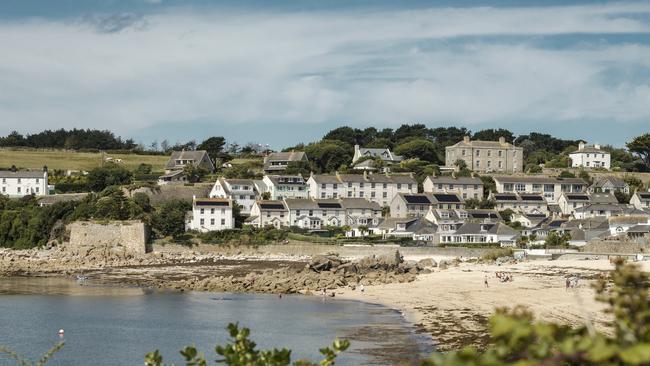
The Scillies are shrouded in legend like a mist drifting in from the sea. They may be the basis for the mythical “lost land” of Lyonesse, enshrined in Arthurian literature. (There’s even a suggestion the body of King Arthur himself may lie in a sixth-century tomb on one of the uninhabited Eastern Isles.) Their history is peppered with seafaring dramas and its waters have seen hundreds of wrecks – most famously that of the HMS Colossus, Nelson’s store ship at the Battle of the Nile, which ran aground in 1798 off the island of Samson with a collection of Greek antiquities on board.
As with all special places, getting there is part of the adventure. There are several possibilities. You can drive all the way to Penzance, the last major town on the Cornish mainland, and make the around three-hour crossing on the Scillonian ferry. (This is not recommended, as the trip is a living hell for seasickness sufferers.) From Newquay, Land’s End or Exeter you can fly in on a 19-seater fixed-wing plane. Or you can take the train from London to Penzance and a 15-minute helicopter flight from there.
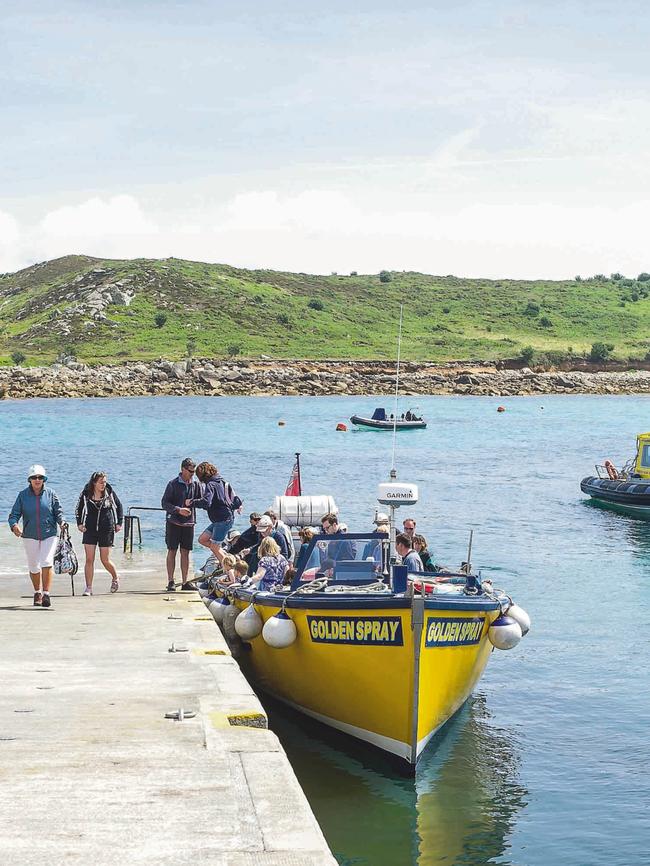
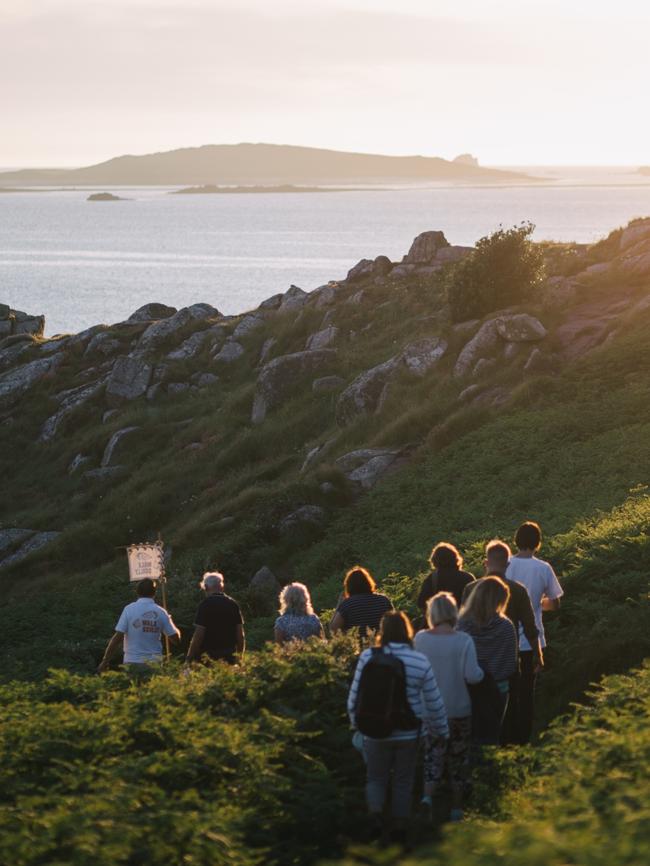
-
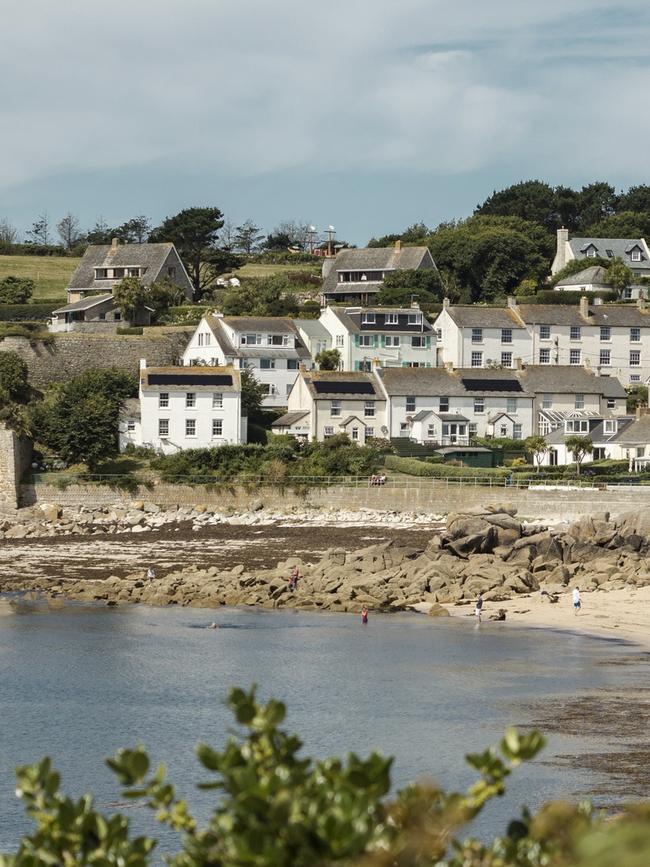

I’d chosen the third option, and soon realised it was a winner. My private cabin on the GWR’s Night Riviera sleeper was clean, warm and well-equipped, with cool white sheets and a small sink to brush my teeth at. For the eight hours of the journey I slept like a baby, rocked by the gentle movement of the train, waking to clear blue skies and a cup of Earl Grey tea. From Penzance Heliport the chopper buzzed out over the sea, the horizon flat and featureless, the water a glassy, cerulean blue. Suddenly there was landfall: a few rocky islets, then a handful of bigger islands with houses, neat green fields, and strips of creamy-white sand lapped by a crystal sea. I landed on St Mary’s, largest of the Scillies and home to most of their 2000-odd residents. My room at the Star Castle, an Elizabethan fortress housing what is probably the islands’ best hotel, looked down over a minuscule harbour where little boats bobbed in the clear water.
Halfway through the morning I walked down from my castle into Hugh Town, capital of the archipelago and a Toytown village of fishermen’s houses in rough grey granite. Hugh Town had the salty, weatherbeaten look of somewhere that until not long ago must have made its living entirely from the sea. The houses had sash windows painted white or pale blue; some with modest Georgian or Victorian details such as an arched or columned doorway. There was almost no traffic. (St Mary’s is the only island with motor vehicles in any number; the so-called “off islands”, Tresco, Bryher, St Martin’s and St Agnes, have virtually none.) The town had a basic supermarket, a fish-and-chip shop or two, old-fashioned tearooms, and souvenir stores selling marine-themed apparel and folksy craft items. In the dark, low-ceilinged interiors of the Mermaid and Atlantic pubs it was easy to imagine mariners gathering to tell sea-dog stories as they supped their pints of Cornish ale. At Mumford’s general store an old sign in the window read “St Bruno: A Man’s Tobacco”. It was like finding yourself on the set of a TV series about post-war England.
Life on Scilly – as it’s also called – depends on the fleet of little boats that ferry people and goods from one island to another. You might share your brief ride with a bunch of schoolchildren, a box of lobsters, and a tourist or two. Next morning I popped over on the Firethorn, an open-topped fishing boat painted true blue, to the small “off island” of Tresco. Walking off the stone pier at Old Grimsby to New Grimsby, an equally tiny collection of seaside cottages, I set off into a maze of country lanes with verdant banks on either side crammed with spring flowers. The fields around here had the narrow rectangular shape that English fields used to have in the old days, before hedges were removed en masse to allow for modern farm machinery.
Tresco is owned by the Duchy of Cornwall – whose CEO is Prince William, a regular visitor with Kate – but has for many years been leased to the aristocratic Dorrien-Smith family. The Dorrien-Smiths manage every aspect of the island, parlaying it into a combination of nostalgic rural idyll and high-end country club. There’s a smart hotel above a pub, houses for rent (all done up in the elegantly rustic Farrow & Ball manner), a wellness centre, and a general store selling everything from Cornish sparkling wine to Calabrian ’nduja and vegan tofu steak, all at London prices. At the Ruin Beach Café in Old Grimsby I sat on a church pew to eat crabmeat bruschetta and John Dory fillets with romesco sauce, both crab and fish caught here on Scilly, and both impeccably prepared.
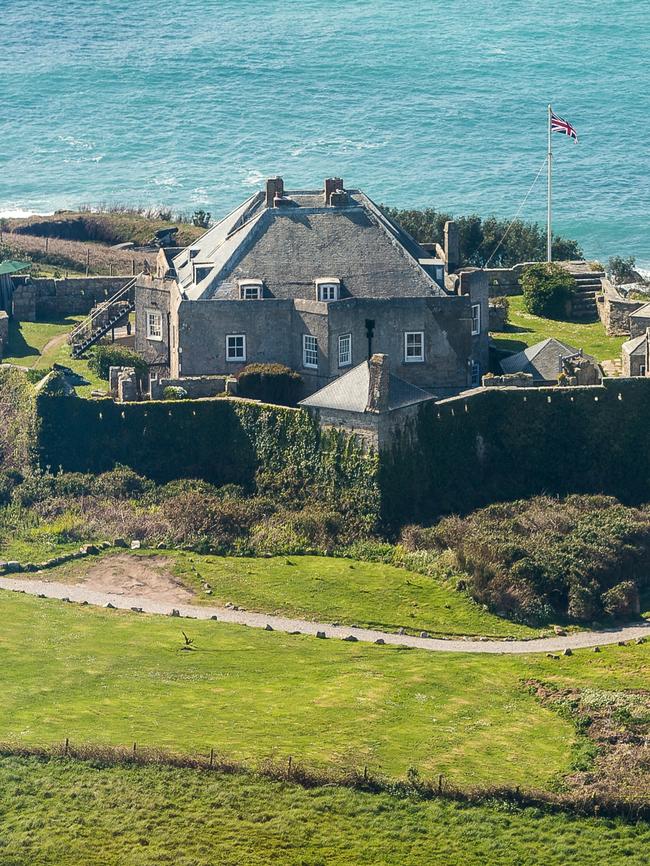
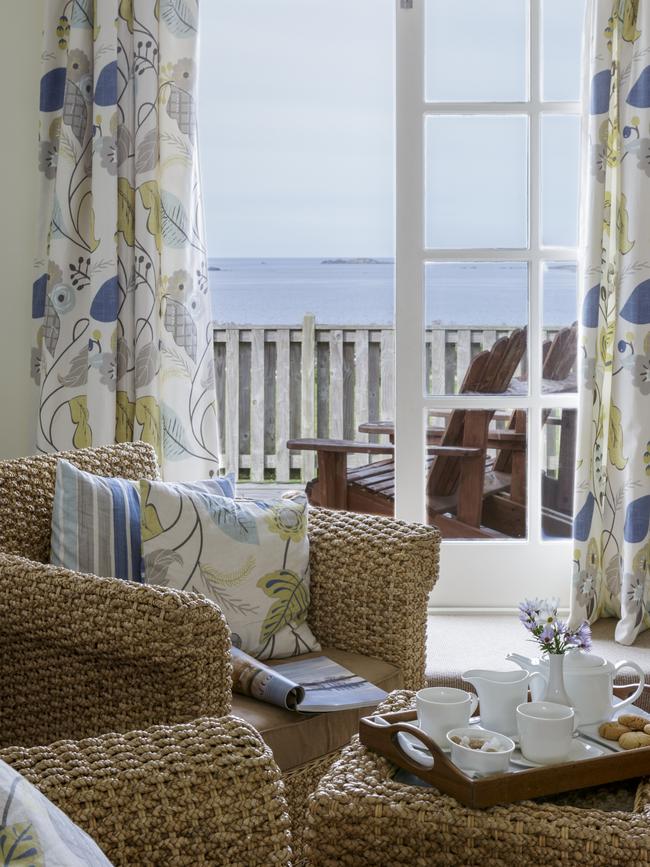
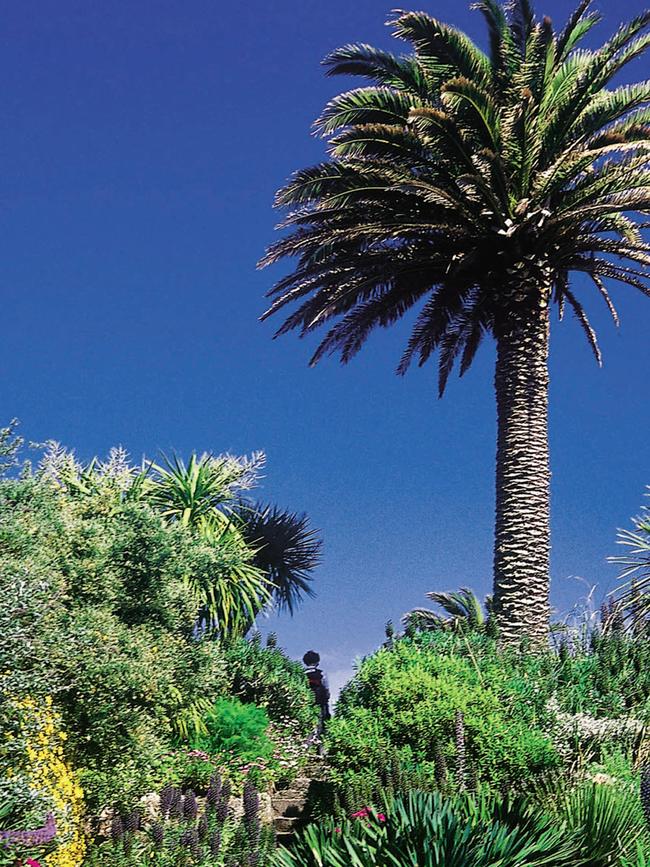
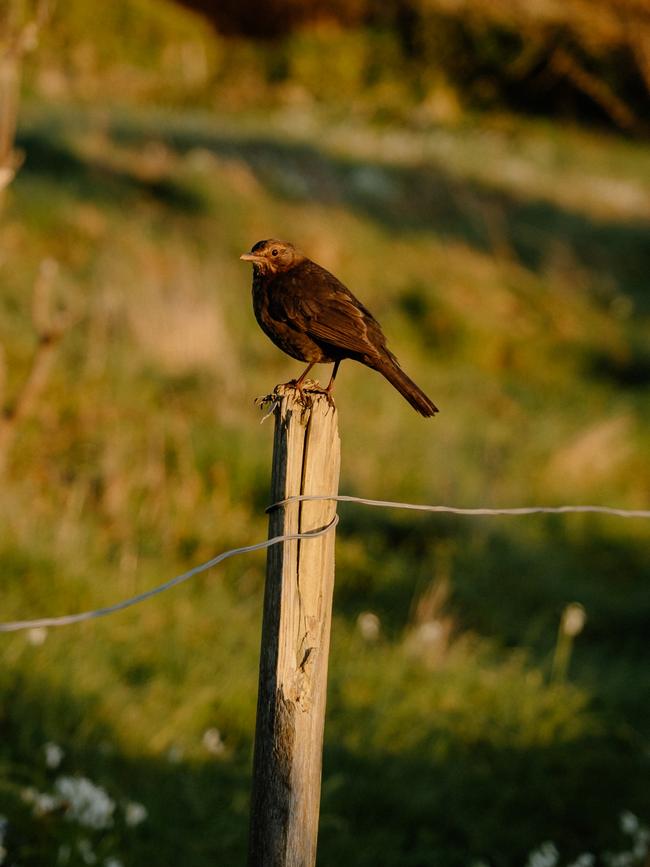
In the manicured gardens of cottages with names like Sandy Lane, Sea Breeze and Sunbeam, palm trees waved and fleshy lobes of aeonium cactus clung to stone walls. Clumps of stately echiums with deep-blue flowers towered by the roadside, reminding me more of the Canary Islands than anywhere in England. At the Abbey Garden, the famous botanic garden founded in the mid-19th century by philanthropist and botanist Augustus Smith, winding paths led into spooky woods where bromeliad tree-ferns grew to a giant size. Warmed by the ocean current known as the Gulf Stream, which powers across the Atlantic from the Gulf of Mexico, the Isles of Scilly enjoy a subtropical microclimate rarely dipping below 5˚C. The result is that exotic species unknown in the rest of the UK can feel right at home here.
Tresco was a remarkable place, but there was something faintly unsettling, almost Truman Show-ish, about its hermetic, perfectly accoutred world. The island of Bryher, which lay just across the water and was reached on another rolling tub, the Britannia, had a different kind of charm – idyllic and tranquil but touched with a kind of wildness, as though ragged at the edges. On the island’s western, Atlantic-facing side a gale was blowing and the rocks were black as tar. Meanwhile, its eastern side, protected from the elements, was calm and sylvan.
There was plenty to do on Bryher despite its diminutive size. You could browse for potted cacti and daffodil bulbs at Scilly Succulents, or snap up bags of homemade fudge in the shack at Veronica Farm. The tombstones in the churchyard told a story of hard times in the Scillies: Kenneth Sidney Crawley, born 1928, was “lost at sea”, while the body of Richard Ernest Jenkins was “committed to the deep”.
Alex Bagnall, an illustrator, had been a social worker in south Wales before pitching up seven years ago to become one of Bryher’s 80 or so inhabitants. I visited the studio behind the beach where Alex makes her prints and drawings and creates sculptural pieces from buoys, whalebones and other seaside flotsam. “I beach-clean madly,” she said. “Everyone thinks I must have a house on the mainland where I live a proper life. But this is my proper life.” Further along the track was another artist’s workplace – a converted boatshed with a view of rocks and ocean. This belonged to Richard Pearce, a fifth-generation Scillonian whose paintings were big glossy seascapes in acrylic, faithfully reproducing the eye-popping blues of the islands’ waters. Even in this back-of-beyond location there was a connection with Australia: the artist’s daughter is employed by the Bega Group in Melbourne and he himself has spent long seasons there, showing his work in galleries on the Mornington Peninsula.

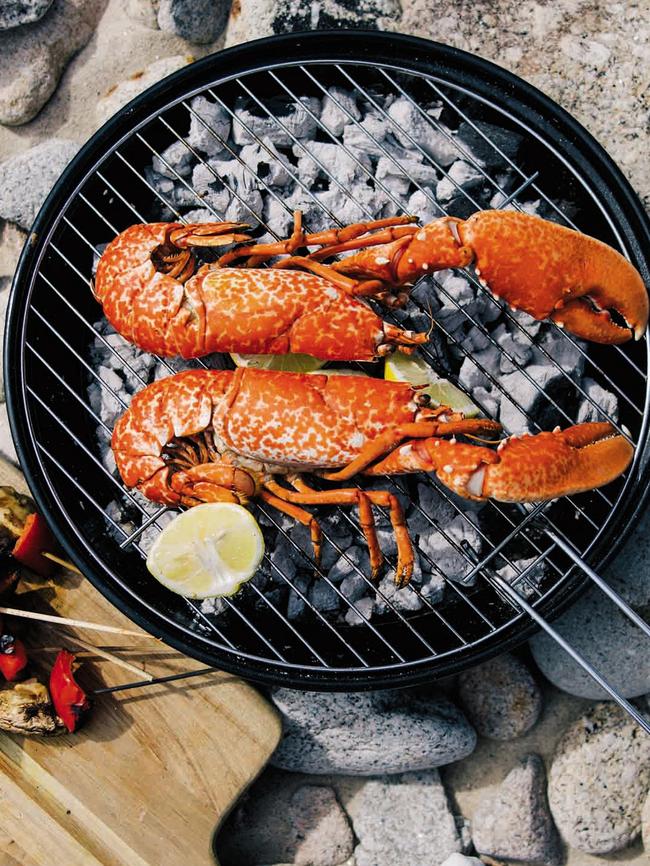
-

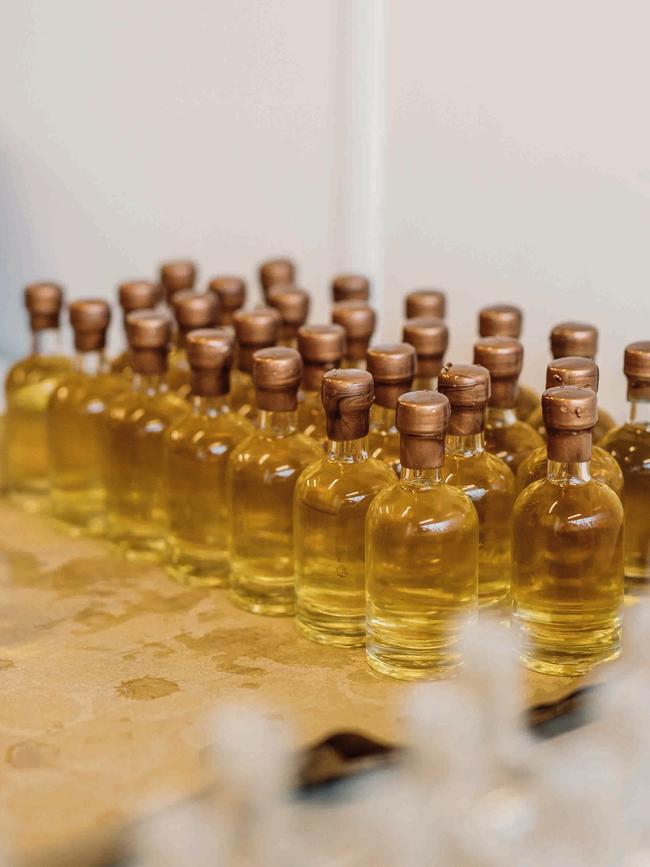
Both Tresco and Bryher were lovely in their way, but it was a third “off island” that truly captured my heart. St Martin’s, the next stop on my Scilly safari, had neither the bluster of Bryher nor the well-upholstered perfection of Tresco. It was a gorgeous scrap of English countryside with no traffic, litter, pollution, noise, or crime, but nonetheless felt like a real functioning community. From the harbour a track wound along the island linking the hamlets of Lower Town, Middle Town and Higher Town. Armed with a map – it looked like the kind of treasure chart a child might draw, with unlikely-sounding place names like Frenchmen’s Graves and Bread and Cheese Cove – I walked in a buzzing silence broken only by the smoker’s cough of pheasants in the hedgerows.
Life on St Martin’s was a bubble within a bubble, a microcosm of Scilly’s already microscopic society. Yet this was a working island where farmers and fishermen rubbed shoulders affably with bohemians and artists. On my walks I ran into a few of the around 130 permanent residents on St Martin’s: recent incomers like Barney and Ella McLachlan, originally from Wolverhampton, and makers of organic breads and Cornish pasties at the Island Bakery in Higher Town. And bonafide locals like Andrew Walder, son and grandson of tenant farmers, who since 2019 has been distilling a range of delicious artisan rums (under the brand name SC Dogs) at a boutique distillery in a converted barn at Carron Farm. Historically, St Martin’s had known poverty and hardship, Andrew told me. Perhaps that was why the islanders were now so busy and entrepreneurial. Among them were flower growers, fashion designers, jewellers, innkeepers, and cooks. At Carron Farm, the Walders grow barley for whisky and make their own sea salt in special salt pans. “We’re quite industrious,” said Andrew.
I explored the island from end to end and from side to side. To the left and right were plots of leeks, Swiss chard, artichokes, and strawberries. I passed a small vineyard, perhaps the most south-westerly in Britain and surely one of the smallest. A wooden stall at a farm gate offered free-range duck eggs and potatoes, with an honesty box to leave your coins in. The cottages fizzled out into rough uplands splashed with yellow gorse and bluebells. Just over the hilltop was Great Bay – a fine sweep of beach with not a building in sight, not another human being, the only footprints on the sand the runic trails left by seabirds. The sea beyond the white sand was a sampler of dazzling blues, from forget-me-not to Yves Klein, daring you to imagine you had beamed down on some Caribbean cove.
Back on St Mary’s I eked out my last hours on the islands, dreading the return to London. My helicopter ride back to Penzance was in a few hours’ time – just long enough for an afternoon stroll from Hugh Town to the settlement of Old Town. The village church, ridiculously pretty, was tucked in a woodland glen above yet another white-sand beach. Calla lilies grew wild in the churchyard. Out in the bay, cormorants dived in the turquoise water.
The Scilly Isles are a remnant, a relic, of an England that no longer exists, like a moth trapped in amber. Beside an Old Town farmhouse stood a public phone box, weed-choked and unused since the dawn of the smartphone. I prised open the door and, picking up the solid black receiver, gingerly placed it to my ear. And, sure enough, there was the hum of the old-fashioned dial tone, coming down the line like a message from another world.
WHERE TO STAY
Star Castle Hotel (St Mary’s): A long-running (since 1933) and much-loved hotel in a 16th-century castle where King Charles II and Queen Victoria have both stayed. The lodging is all the better for the Francis family’s friendly, hands-on management style. Of the hotel’s 38 rooms, the guard-houses on the ramparts are small but cosy, while a new-build wing of suites offers English-style comforts such as fitted carpets, tiny gardens with picket fences, and comfortable decor in conservative shades of grey and blue. A highlight of the restaurant menu is the lobster caught by owner Robert Francis – best accompanied with a crisply delicious 2022 pinot gris-chardonnay blend from Francis’s own Holy Vale vineyard on St Mary’s. star-castle.co.uk
Hell Bay Hotel (Bryher): The New Inn is Tresco’s premier lodging but Hell Bay on Bryher, also owned by the Dorrien-Smith family, is more impressively sited in a wild and rocky landscape on the island’s north shore. The interior, an oasis of colour and comfort, features artworks by such 20th-century luminaries of British art as Barbara Hepworth and Ivon Hitchens. The restaurant is among the islands’ best. hellbay.co.uk
Karma (St Martin’s): One of the Scilly islands’ few upscale hotels, this is an architect-designed property housed in a series of granite dwellings whose forms harmonise well with the island landscape. The Karma is something of a chameleon, having changed hands several times before its current, successful incarnation as a luxurious beachside retreat with interiors by German designer Tina Kirschner. karmagroup.com
Tresco Estate: The Tresco organisation offers a wide range of well-equipped cottages and apartments for rent on the island. tresco.co.uk
EATING AND DRINKING
Ruin Beach Café (Tresco): One of several classy eating places on the island of Tresco, with a laid-back Mediterranean-inspired menu – think linguine with local crabmeat and Niçoise salad with mackerel and new Cornish potatoes – and a beachfront vibe. tresco.co.uk
Dibble & Grub (St Mary’s): For more than 20 years this brightly decorated locale (once a fire station) behind Porthcressa Beach on St Mary’s has been the islands’ most fun eating-place bar none. Chefs Button Reseigh and Sam Pickersgill bravely foreground island ingredients in a kaleidoscopic menu of small plates inspired by Spain, Morocco, Persia and beyond. dibbleandgrub.co.uk
The Crab Shack (Bryher): Locally sourced crab – caught by the Pender family in their boats Emerald Dawn and Dorothy Ethel – is the raison d’être of this rustic restaurant in an old stone barn at Hell Bay Hotel on Bryher. hellbay.co.uk
SC Dogs (St Martin’s): Andrew Walder’s distillery, one of a growing number in the Isles of Scilly, produces a range of fine spirits including a rum aged for three years in whisky barrels and another subtly flavoured with orange peel, spices and muscovado sugar. scdogs.co.uk
Troytown Farm (St Agnes): The ice-cream made at Troytown dairy farm on the island of St Agnes, made from the milk of the farm’s own Jersey and Ayrshire herd, is available all over Scilly. (The Madagascar Vanilla, in particular, is dangerously good.) Clotted cream, beef, pork and other farm produce are also sold on site. troytown.co.uk
THE FINE PRINT
The writer was a guest of Visit Isles of Scilly. For more information and inspiration, including seasonal activities, see visitislesofscilly.com. For information on Great Western Railway’s Night Riviera sleeper train, see gwr.com. Find details of Penzance Helicopters transfers at penzancehelicopters.co.uk.

To join the conversation, please log in. Don't have an account? Register
Join the conversation, you are commenting as Logout